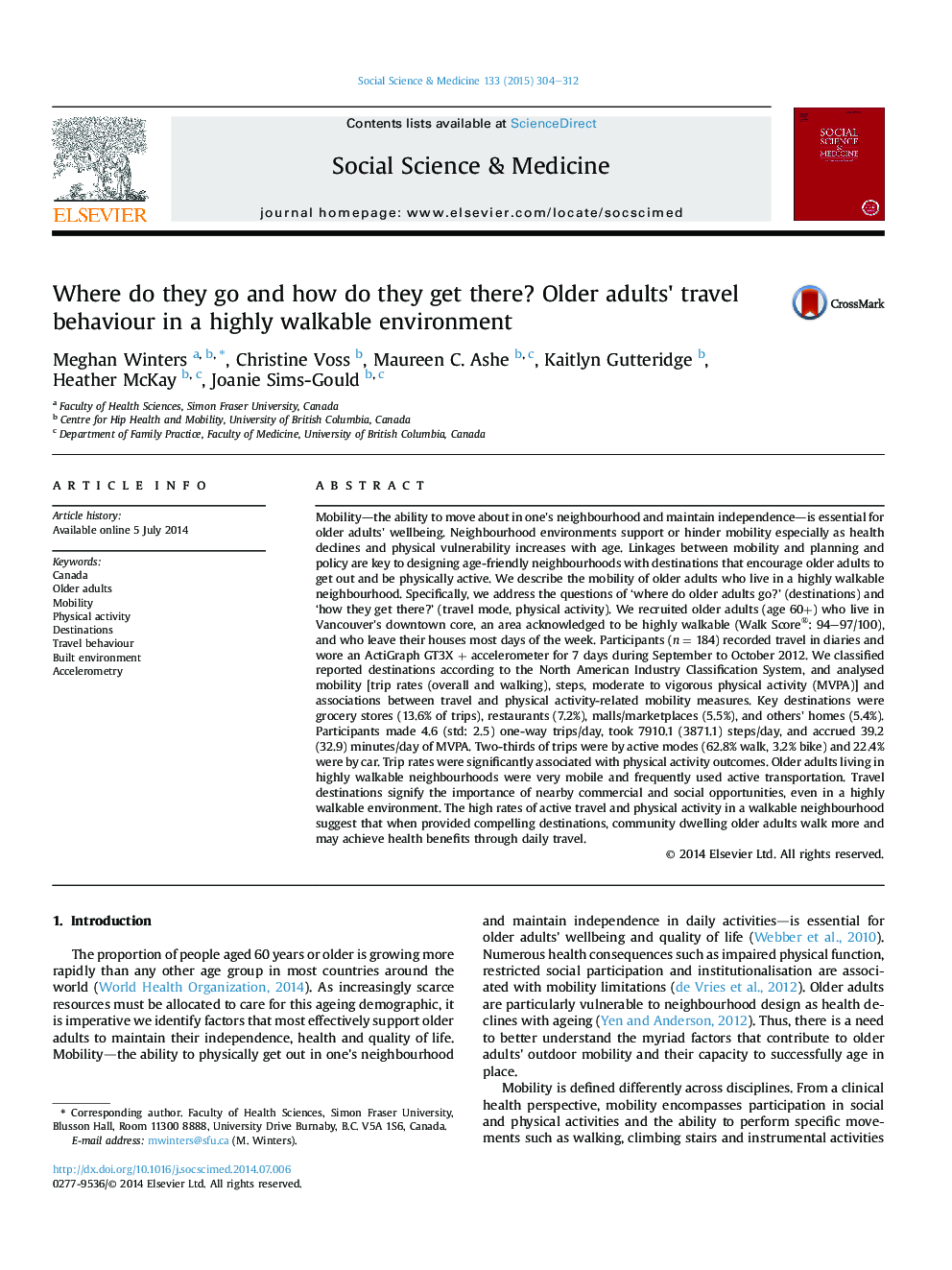| کد مقاله | کد نشریه | سال انتشار | مقاله انگلیسی | نسخه تمام متن |
|---|---|---|---|---|
| 7332508 | 1476035 | 2015 | 9 صفحه PDF | دانلود رایگان |
عنوان انگلیسی مقاله ISI
Where do they go and how do they get there? Older adults' travel behaviour in a highly walkable environment
ترجمه فارسی عنوان
آنها کجا می روند و چگونه می رسند رفتار مسافران بزرگسالان سالخورده در یک محیط بسیار شسته و رفته
دانلود مقاله + سفارش ترجمه
دانلود مقاله ISI انگلیسی
رایگان برای ایرانیان
کلمات کلیدی
کانادا، بزرگسالان سالمند، تحرک، فعالیت بدنی، مقصد رفتار مسافرت، محیط ساخته شده، شتاب سنج
موضوعات مرتبط
علوم پزشکی و سلامت
پزشکی و دندانپزشکی
سیاست های بهداشت و سلامت عمومی
چکیده انگلیسی
Mobility-the ability to move about in one's neighbourhood and maintain independence-is essential for older adults' wellbeing. Neighbourhood environments support or hinder mobility especially as health declines and physical vulnerability increases with age. Linkages between mobility and planning and policy are key to designing age-friendly neighbourhoods with destinations that encourage older adults to get out and be physically active. We describe the mobility of older adults who live in a highly walkable neighbourhood. Specifically, we address the questions of 'where do older adults go?' (destinations) and 'how they get there?' (travel mode, physical activity). We recruited older adults (age 60+) who live in Vancouver's downtown core, an area acknowledged to be highly walkable (Walk Score®: 94-97/100), and who leave their houses most days of the week. Participants (n = 184) recorded travel in diaries and wore an ActiGraph GT3X + accelerometer for 7 days during September to October 2012. We classified reported destinations according to the North American Industry Classification System, and analysed mobility [trip rates (overall and walking), steps, moderate to vigorous physical activity (MVPA)] and associations between travel and physical activity-related mobility measures. Key destinations were grocery stores (13.6% of trips), restaurants (7.2%), malls/marketplaces (5.5%), and others' homes (5.4%). Participants made 4.6 (std: 2.5) one-way trips/day, took 7910.1 (3871.1) steps/day, and accrued 39.2 (32.9) minutes/day of MVPA. Two-thirds of trips were by active modes (62.8% walk, 3.2% bike) and 22.4% were by car. Trip rates were significantly associated with physical activity outcomes. Older adults living in highly walkable neighbourhoods were very mobile and frequently used active transportation. Travel destinations signify the importance of nearby commercial and social opportunities, even in a highly walkable environment. The high rates of active travel and physical activity in a walkable neighbourhood suggest that when provided compelling destinations, community dwelling older adults walk more and may achieve health benefits through daily travel.
ناشر
Database: Elsevier - ScienceDirect (ساینس دایرکت)
Journal: Social Science & Medicine - Volume 133, May 2015, Pages 304-312
Journal: Social Science & Medicine - Volume 133, May 2015, Pages 304-312
نویسندگان
Meghan Winters, Christine Voss, Maureen C. Ashe, Kaitlyn Gutteridge, Heather McKay, Joanie Sims-Gould,
